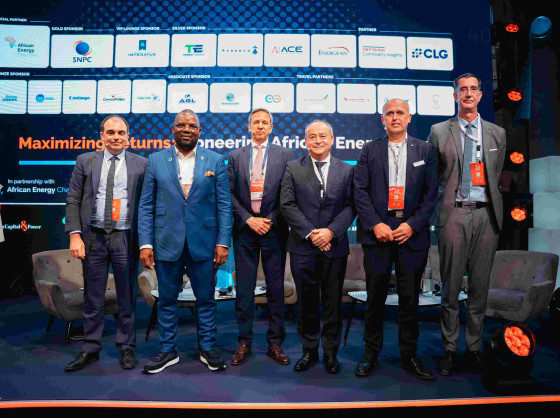
Accelerating Africa’s liquefied natural gas (LNG) ambitions will depend on mobilizing risk-tolerant investment, building strong technical and commercial partnerships, and committing to local capacity-building, according to panelists at the Invest in African Energy (IAE) Forum in Paris.
Speaking during a discussion on monetizing African gas sponsored by Perenco, UTM Offshore Managing Director Julius Rone emphasized that LNG demand remains robust, but the missing piece is financing. “Investment is required. The market is there. LNG is not going anywhere – global gas demand is increasing every year. Therefore, we need the right investors to enable us to monetize our gas.”
The $5 billion UTM FLNG project offshore Nigeria is currently in its pre-construction phase. Rone emphasized that indigenous players like UTM Offshore are capable of forming the right partnerships to drive development, with plans to take FID in the coming months, move into the construction phase and expand the company’s FLNG technologies beyond Nigeria into other African markets.
Competitiveness Starts at the Wellhead
For international players, the viability of LNG in Africa hinges on low-cost resources and predictable legal frameworks. Golar LNG’s Chief Commercial Officer Federico Petersen noted that while Africa holds a geographic edge over the U.S. in terms of access to global markets, project economics must work from the start.
“In the U.S., both the liquefaction and transport sides are increasing – if Africa can beat the U.S. at the wellhead, then it can have competitive liquefaction and it is closer to Europe and Asia,” said Petersen.
He added that technical capability and financial strength are key to delivering projects at scale, along with speed and access to low-cost gas. “The asset needs to be cheap gas. We look at the asset, the contract and the partner… On the contract side, the legal framework and the stability needs to be there, both for upstream operators and for us.”
Infrastructure-First Approach
Gas infrastructure must come before LNG exports, according to Denis Chatelan, Head of Business Development at Perenco. The company’s strategy has focused on domestic gas use as a foundation for future liquefaction, citing gas-to-power and gas-to-industry projects in Gabon and Cameroon.
“We did not start with liquefaction, but to develop the gas resources… We managed to find the right compromise of investment, ROI and infrastructure,” said Chatelan. “At Perenco, we have deployed equity. If you want big rewards, then you have to take some risk. We have taken the risk of infrastructure, which is a very important first step to develop the gas resources of a country.”
Local Support Critical to Long-Term Success
Jiří Rus, Sales&Business Development Director at Neuman&Esser, stressed the importance of original equipment manufacturers building in-country operational support to sustain LNG and gas projects.
“Within our partnerships, we focus on operation. We need to support projects not from Germany, but through local service centers. We have one in Port Harcourt in Nigeria, for example, to support future projects, and now we are doing so in Mozambique,” said Rus.
Dominique Gadelle, VP of Upstream&LNG at Technip Energies, echoed the importance of anchoring projects in local benefits. “Boosting local economies, power generation… This is a must before going to international exports,” he said. “We can also look at monetizing gas in different ways – fertilizers, for instance. We also need to promote regional cooperation, and we cannot forget local skills, employment and education and training programs.”
Distributed by APO Group on behalf of Energy Capital&Power.


